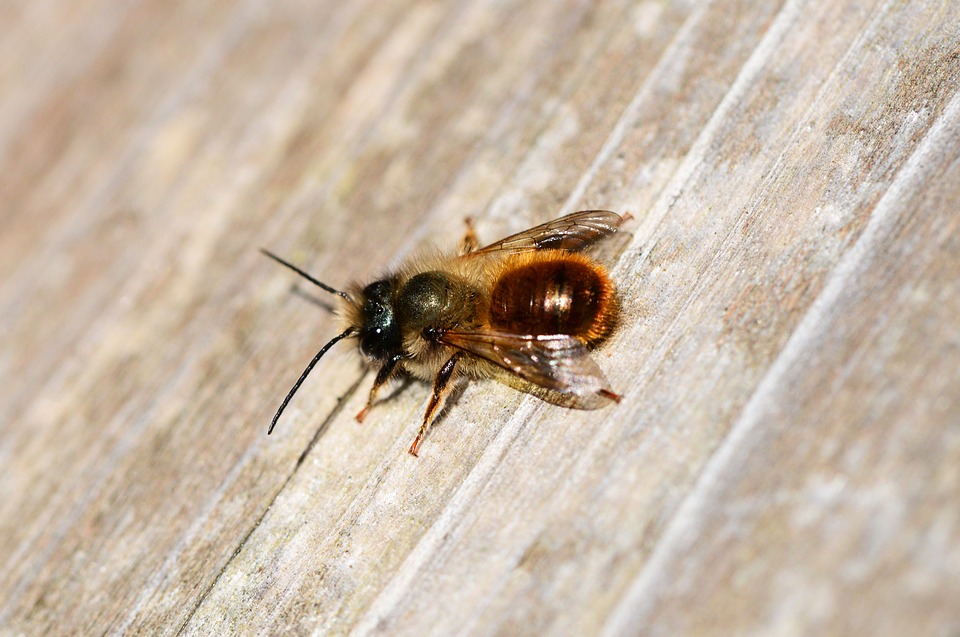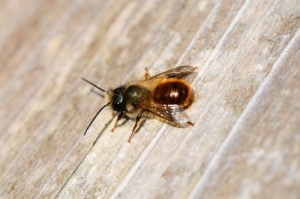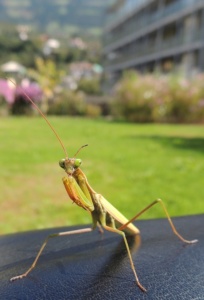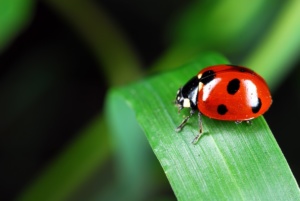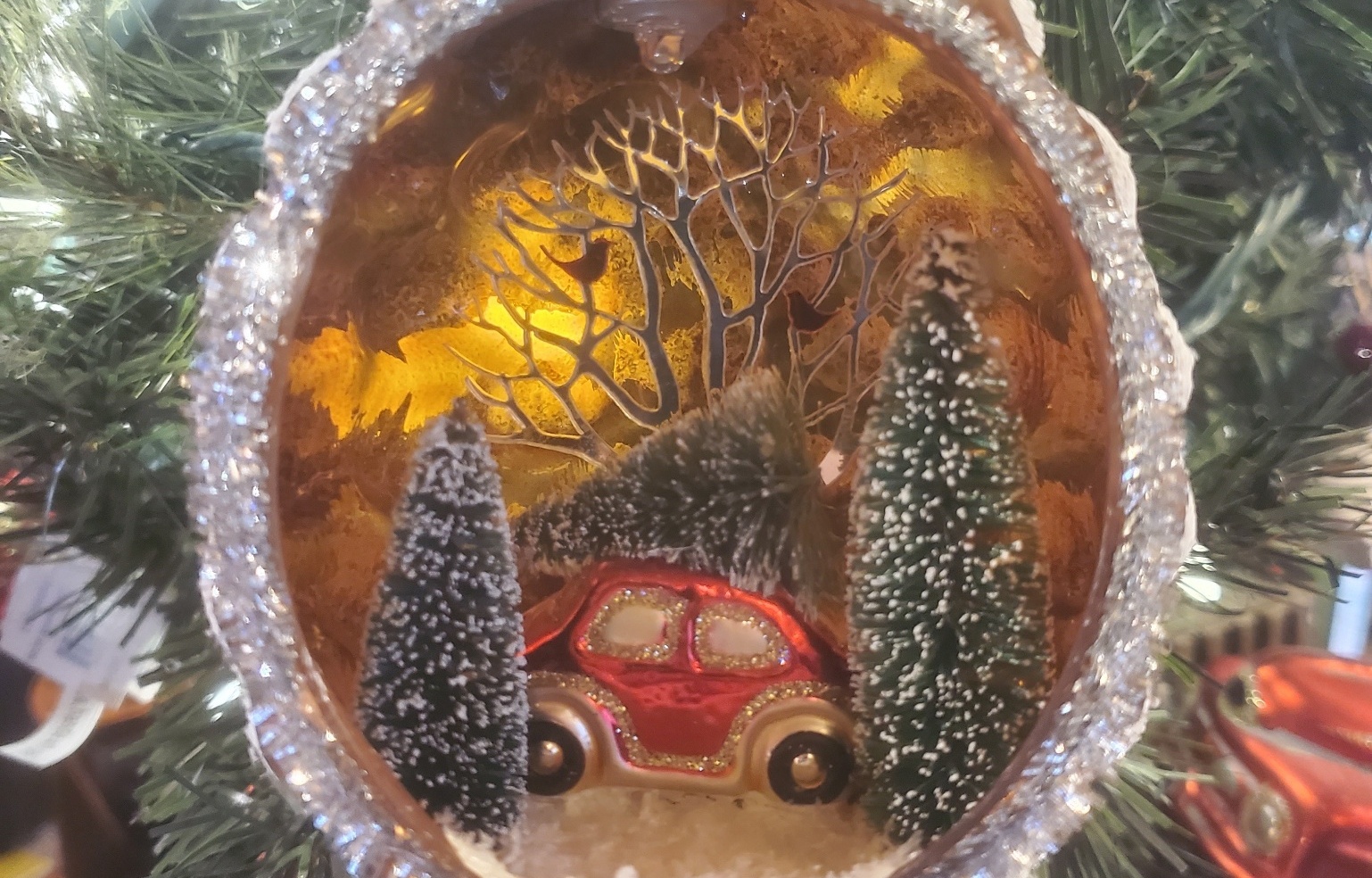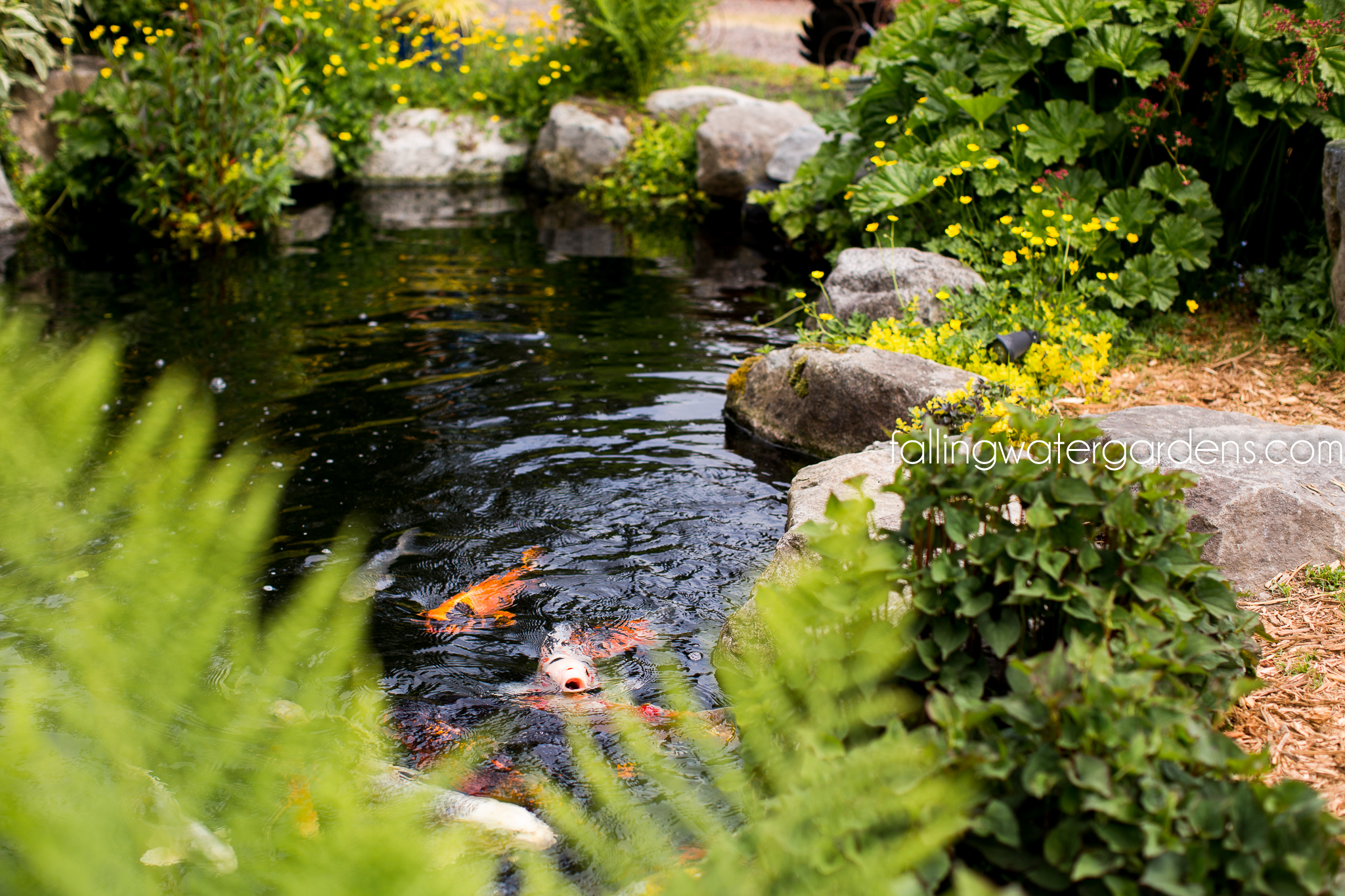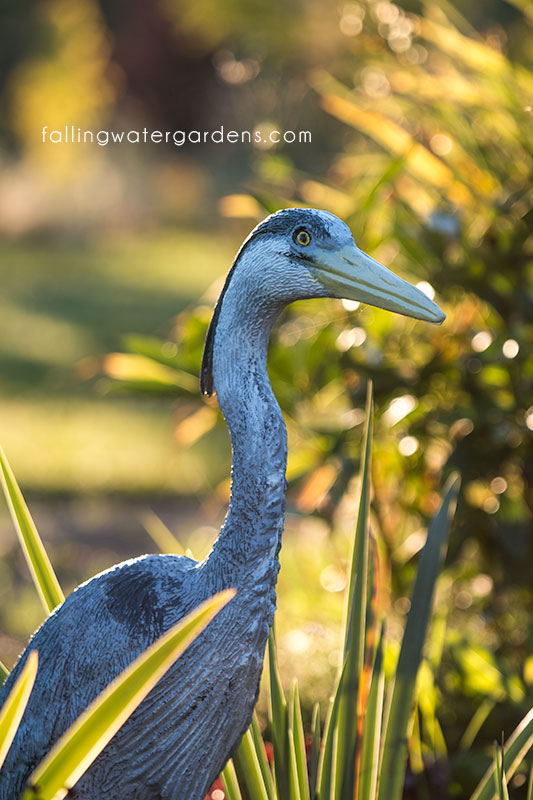BENEFICIAL INSECTS
Looking for an Eco-friendly way to get rid of bad bugs or a way to help pollinate your veggie gardens and fruit trees? Check out these critters…
MASON BEES
Mason bees are a type of native bee that’s quite common throughout most of the U.S. They are usually a little smaller than a honeybee, and typically metallic blue or blue-black in color. They get their name from their habit of nest-building, which is to seal off the cells where they lay their eggs, with a mortar-like application of mud.
There are about 140 species of mason bees in North America. All are solitary bees. The males do not have a stinger, and the females will only sting if trapped or squeezed. This makes them an ideal neighbor for the home garden, since they pose little to no threat of stinging.
Nesting & Egg-laying
In the wild, mason bees lay their eggs in small natural cavities such as woodpecker holes, insect holes and hollow stems, but they seem to be just as happy to lay their eggs in artificial nesting cavities such as wooden blocks with holes drilled in them, cardboard tubes and paper straws. Because mason bees are unable to excavate their own nesting cavities, they seem to be quite happy to use whatever location is suitable.
Female Mason Bee
 Female mason bees emerge in early spring and immediately begin to forage for pollen and nectar, which they collect from fruit trees, berries, flowers and vegetables. They pack this food into the far end of their nesting cavity until they decide there’s enough there to feed a young bee. Then she lays an egg and seals up the cell. This process continues until the bee has filled the entire chamber with a series of pollen/nectar/egg cells. Interestingly, the eggs that are destined to be female are always deposited at the back of the nesting chamber; the male bees will emerge first.
Female mason bees emerge in early spring and immediately begin to forage for pollen and nectar, which they collect from fruit trees, berries, flowers and vegetables. They pack this food into the far end of their nesting cavity until they decide there’s enough there to feed a young bee. Then she lays an egg and seals up the cell. This process continues until the bee has filled the entire chamber with a series of pollen/nectar/egg cells. Interestingly, the eggs that are destined to be female are always deposited at the back of the nesting chamber; the male bees will emerge first.
Once the mason bee has completely filled one chamber, she will begin filling another one. This pollen-collecting and egg-laying will continue for four to six weeks, after which the bee will die.
Mason bee larvae hatch just a few days after the eggs are laid. They munch away on the food that’s been stored in their cell, which usually lasts them about 10 days. Then the larva spins a cocoon and pupates. By autumn, the insects look like an adult bee, but they remain inside their cocoons throughout the winter. When the weather warms in the spring, the males break through first; the females emerge several days later.
Effective Pollinators
Mason bees are very effective pollinators. Just two or three females can pollinate a mature apple tree! Mason bees will also work in cool or rainy weather when honeybees are more likely to take the day off.
Mason bees actually prefer to make their nests close together. An artificial nesting chamber takes advantage of this trait. Bees appreciate the convenience! In the wild, their eggs are laid in natural cavities which are rarely re-used. To avoid pest and disease problems, artificial nesting boxes should be carefully cleaned or disposed of after one or two seasons of use.
Source: Gardener's Supply Company
Here is a video on how to release your mason bees:
PRAYING MANTIDS
USE
Praying Mantids eat a wide variety of garden pests. In their younger stages they eat aphids, thrips, flies and maggots, small caterpillars, leafhoppers, white grubs and other soft-bodied insects. Mature Mantids feed on larger caterpillars, earwigs, chinch bugs, sow bugs, beetles, grasshoppers and other large insects.
RELEASE
You can keep the egg cases in the cup, set them on a window ledge or in the patio until they hatch. As soon as you see tiny praying mantids emerge remove the lid and sprinkle the mantids around your garden. Or put the egg case in a bush, hedge, limb or anything more than two feet above ground. The egg case may be inserted in the fork of a branch or hung with a piece of string or needle and thread rum through the outside of the case. Hanging will help keep birds and rodents from eating the eggs in the case. If ants are in the area, oiling the string will help keep them away.
LIFE CYCLE
Praying Mantids (Tenodera sinensis) hatch out of their egg case (ootheca) along the seam that looks like louvered windows with some mud packed on top. They hatch in the spring when the weather warms, the warmer the temperature, the sooner they hatch.
Unlike most insects the mantids do not hatch as larvae, they emerge as miniature adults, about half an inch long.
They will grow through spring and summer until they reach a length of 5 to 6 inches, shedding their skins several times. Although mantids have wings, they do not use them until fall when the female wings develop and she begins flying around looking for males to mate with.
After mating, she eats the head off the male, which helps to nourish her eggs. She then attaches the brown foam to a branch, lays her eggs inside, and dies shortly afterward, The eggs are protected from the winter cold in the foam and the cycle begins again in the spring.
GENERAL INFORMATION
When the eggs hatch the egg case does not change in appearance except for what looks like a little sawdust hanging from the seam. Since the Mantids do not move much and blend easily with their surroundings, it is easy to miss the hatching.
While most insects are constantly searching for food, Mantids are content to stay in one area and wait for their food to walk by and grab it with their strong forelegs. This is why they are good to use early in the season, before there are pest problems, and use other insects after pests arrive.
LADYBUGS
USE
Ladybugs prefer to eat aphids and will devour up to 50 a day, but they will also attack scale, mealy bugs, leafhopper, caterpillar eggs, and other soft bodied pests. They dine only on insects and do not harm vegetation in any way.
RELEASE
Ladybugs should always be released after sundown since they only fly in the daytime. During the night, they will search the area for food and stay as long as there is food for them to eat. The more they eat the more eggs they lay and the more insect eating larvae you will have. It is best if the area has been recently watered. Ladybugs tend to crawl up and toward light. So release them in small groups at the base of plants and shrubs that have aphids or other insects, and in the lower part of trees.
LIFE CYCLE
Ladybugs mate in the spring and lay yellow eggs in clusters of 10 to 50 on the underside of leaves. About five days later the larvae emerge and will eat about 400 aphids during their 2.5 week cycle. The larvae look like tiny black caterpillars with orange spots but do not eat vegetation.
The larvae then pupate and emerge from their cocoon as adults after about a week. They begin feeding on aphids, other insects, and pollen to build up their body fat. In the summer and fall the Ladybugs migrate into the mountains and during the winter they lie dormant under the snow. In the early spring they fly back down to the lowlands to resume searching for food in earnest. They begin mating, lay eggs, and die.


